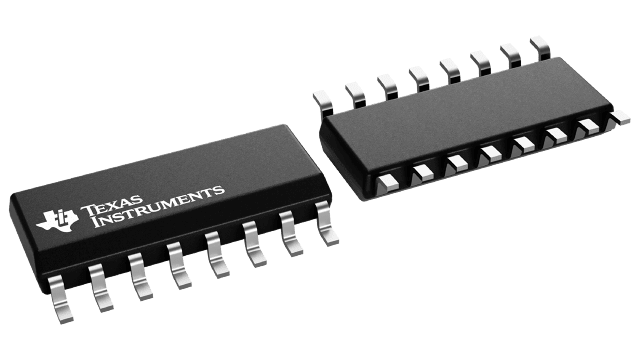パッケージ情報
| パッケージ | ピン数 SOIC (D) | 16 |
| 動作温度範囲 (℃) 0 to 70 |
| パッケージ数量 | キャリア 2,500 | LARGE T&R |
BQ2014 の特徴
- Conservative and repeatable measurement of available charge in rechargeable batteries
- Charge control output operates an external charge controller such as the bq2004 Fast Charge IC
- Designed for battery pack integration
- 120µA typical standby current
- Display capacity via single-wire serial communication port or direct drive of LEDs
- Measurements compensated for current and temperature
- Self-discharge compensation using internal temperature sensor
- User-selectable end-of-discharge threshold
- Battery voltage, nominal available charge, temperature, etc. available over serial port
- 16-pin narrow SOIC
BQ2014 に関する概要
The bq2014 Gas Gauge IC is intended for battery-pack or in-system installation to maintain an accurate record of available battery charge. The IC monitors the voltage drop across a sense resistor connected in series between the negative battery terminal and ground to determine charge and discharge activity of the battery.
Self-discharge of NiMH and NiCd batteries is estimated based on an internal timer and temperature sensor. Compensations for battery temperature and rate of charge or discharge are applied to the charge, discharge, and self-discharge calculations to provide available charge information across a wide range of operating conditions. Battery capacity is automatically recalibrated, or "learned," in the course of a discharge cycle from full to empty.
The bq2014 includes a charge control output that controls an external Fast Charge IC such as the bq2004.
Nominal Available Charge (NAC) may be directly indicated using a five-segment LED display.
The bq2014 supports a simple single-line bidirectional serial link to an external processor (with a common ground). The bq2014 outputs battery information in response to external commands over the serial link.
Internal registers include available charge, temperature, capacity, battery voltage, battery ID, battery status, and programming pin settings. To support subassembly testing, the outputs may also be controlled. The external processor may also overwrite some of the bq2014 gas gauge data registers.
The bq2014 may operate directly from three or four cells. With the REF output and an external transistor, a simple, inexpensive regulator can be built to provide VCC across a greater number of cells.
